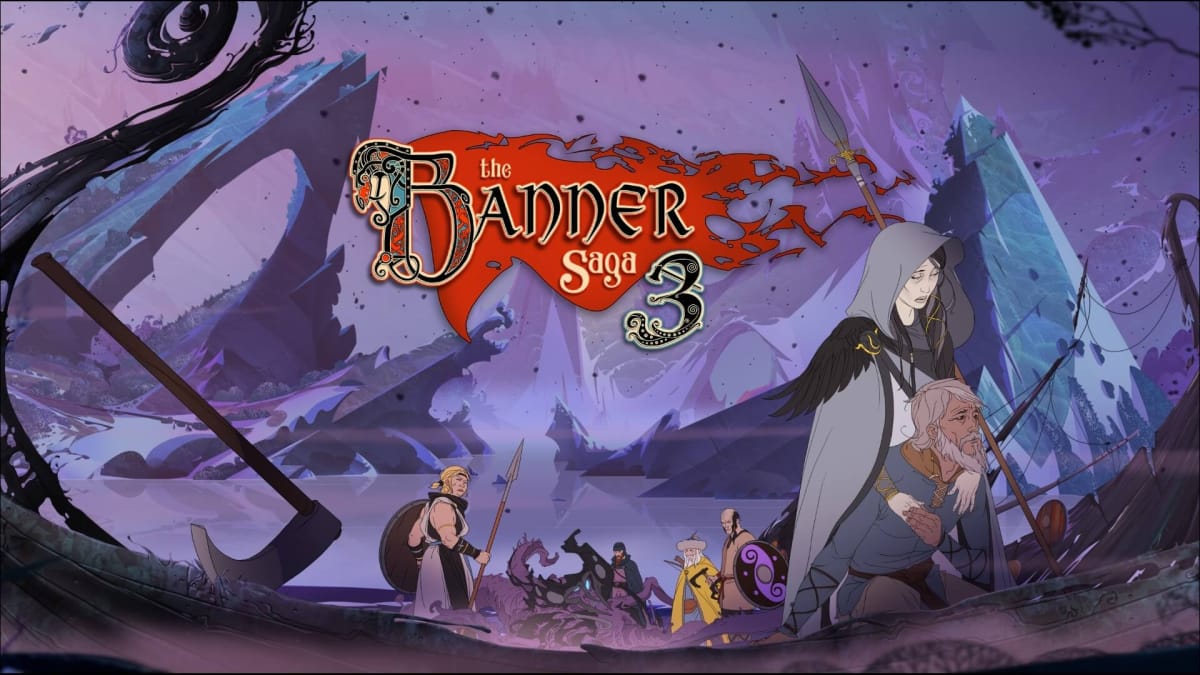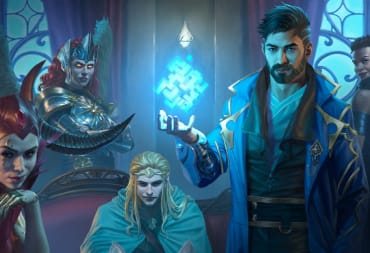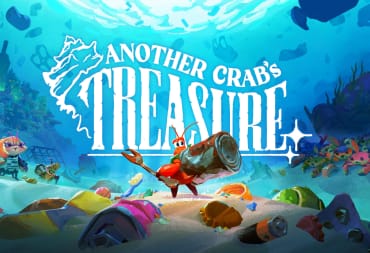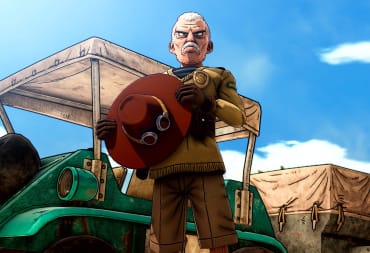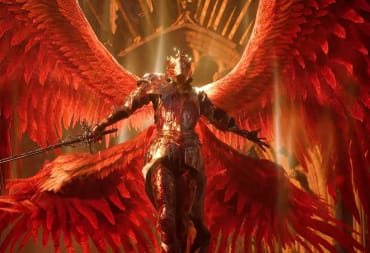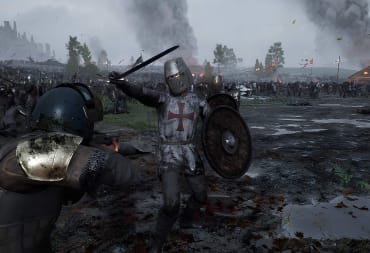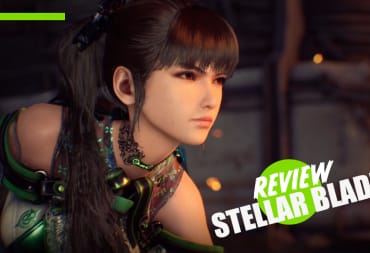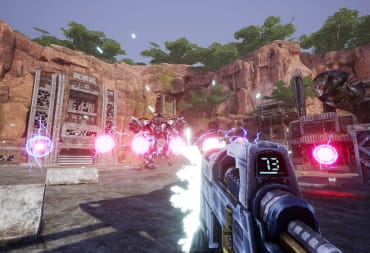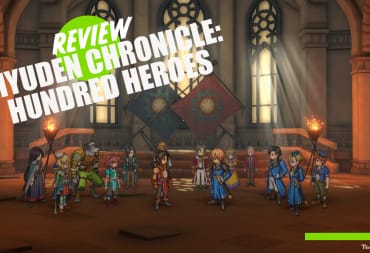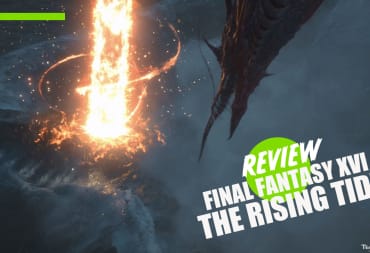There's often a "point of no return" moment in some games that suggest you should save your game. That what follows is a game-changing moment and you won't be going back. The feeling of "oh, stuff's about to go down" and the excitement of seeing the outcome of all your time playing a game sets in. Maybe your heart rate picks up as big events unfold. That "point of no return" feeling was with me the whole time I played The Banner Saga 3.
Rather than rehash the new additions to combat and how they work, you can check out my preview of the game here. While there are a few surprises left in terms of combat, the majority of the new editions in Banner Saga 3 happen in the first couple of chapters, which that preview looks at. There are of course new enemies to deal with, which have new ways to ruin your day on the battlefield, as well as other mechanics. They're all seamlessly integrate into what's already there from the first two games, adding more depth and complexity to combat. New enemy permutations and battlefield layouts create battles where there can be a lot to consider. Not to mention the new allies and the abilities they bring to the table.
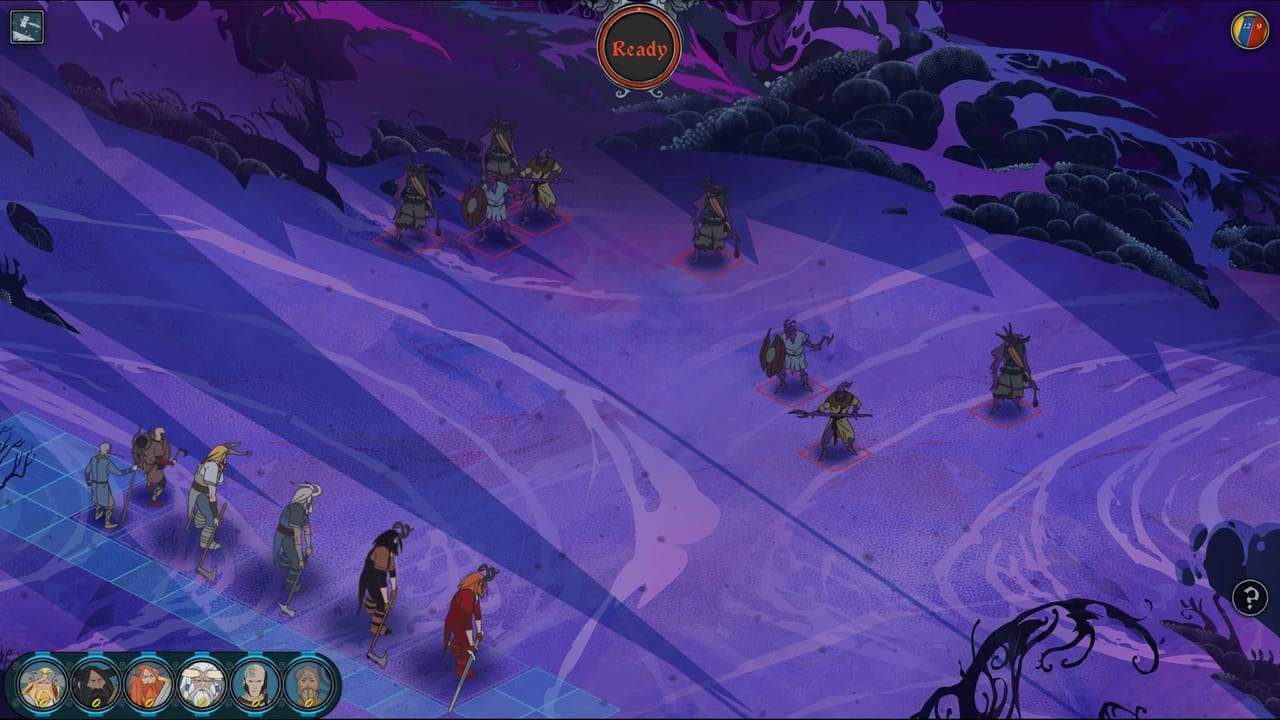
The Banner Saga 2 ends with the world almost consumed by darkness. The main group of clansmen finally reach their destination at the human capital of Aberrang. The city is less a city and more a hodgepodge of factions not trusting one another. Some of those factions see the crisis as an opportunity to grab power or just more stuff for themselves. What's going on in Aberrang is only half of the story, however. There's still the small band of mercenaries, Valka, and varl venturing into the darkness to try to prevent it from consuming the entire world.
Those are two important sides of the same overall story. In one, we see how the remnants of the world are struggling to hold on in a city wracked by internal conflict. How our most desperate moments bring out both the best and the worst in people. Seeing the good and bad in pursuit of survival puts into context what the small group trying to stop the darkness s doing. What exactly are they trying to save? It's easy to say "the world," but what does that mean or look like? The two points of view do wonders in constantly pushing one another forward, keeping you engaged the entire time.
It would have been simple to just cut back and forth between the two points of view to create tension. A slow degradation of the city as the darkness encroaches could have easily upped the pressure when going back and forth with the group in the darkness. They overcome some obstacle, while those in the city get pushed further behind its walls. One powerful moment leading to the other. That would have likely been enough to drive the game along well enough.
With a core gameplay element wrapped around making choices, Banner Saga 3 ramps up that storytelling to another level. The tales constantly cut back and forth, in a similar fashion as the first two games, but now both of the points of view directly affect one another.
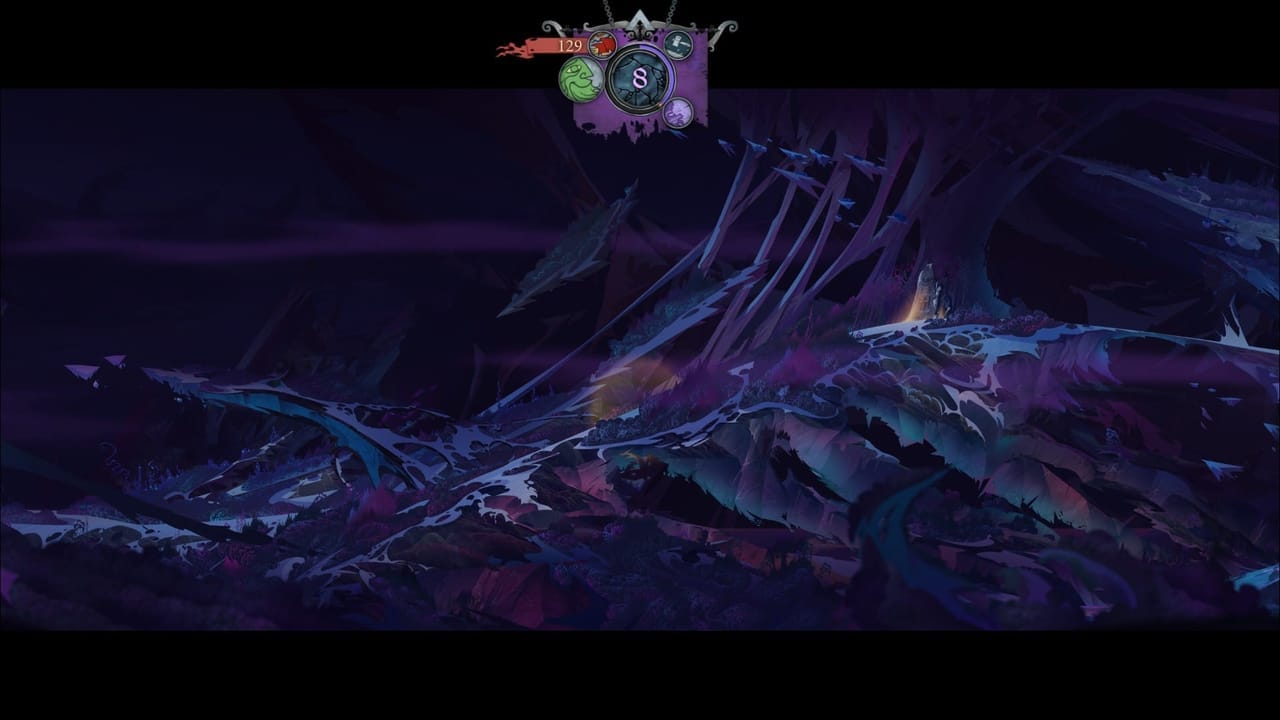
The way this works is pretty simple. We became used to the idea of the days slowly going up as the journey progressed and the games moved along. The only constraint on time before was supplies, but there was enough wiggle room to make it not much of a challenge or worry. In Banner Saga 3, that's not the case. The days no longer record your journey, but countdown disaster in Aberrang. You need more than just supplies to keep that number up.
So, those in Aberrang are trying to survive by lengthening that countdown, as those in the darkness are trying to save everyone in the limited amount of days. Choices in the darkness, such as what to do when there's a giant monster in your way—hide or run—have another dimension to them as the simple survival of their small group isn't all that's at stake. You're forced to take risks, considering time above all else. No matter what, your days will reach zero at some point, which moves the point of view back to those in Aberrang.
Those in Aberrang do all they can to increase those days. The first set of days are calculated using all of the choices you've made in the entire series up to that point. Once those days are gone, new, immediate choices in Aberrang must be made to get the number of days back up. A fire breaks out, do you take the opportunity to eliminate a troublesome faction—the likely starters of the fire—or do you rush to put it out so the flames don't spread? Disputes between the various groups in the city have a different feeling to them now, too. Where before it would be easy to side with those you like, now you have the added element of thinking what would be the best for everyone.
One of the biggest problems with choice-heavy narrative games is giving those choices the proper significance—making choices feel like they matter. Throughout the first two games, there were plenty of choices to be made, but it was sometimes difficult to see whether they did much of anything. In Banner Saga 3, we see that they definitely did. Not only do they affect the gameplay in a significant way, the closer the journey comes to the end, the more you'll see previous decisions come back to haunt or help you when talking with other characters. Some that you likely won't remember either, as they may have seemed inconsequential to you at the time—filler as you traveled. Some characters took note of those decisions, however.
Stoic did a brilliant job of designing player choices to affect both narrative and gameplay. From what characters you'll have with you at the end, to the state of Aberrang when it's saved, the culmination of all your choices will make your game quite different from another player. The state of the world, your characters' relationships, who is alive, and more are all different depending on the many choices made throughout the series.
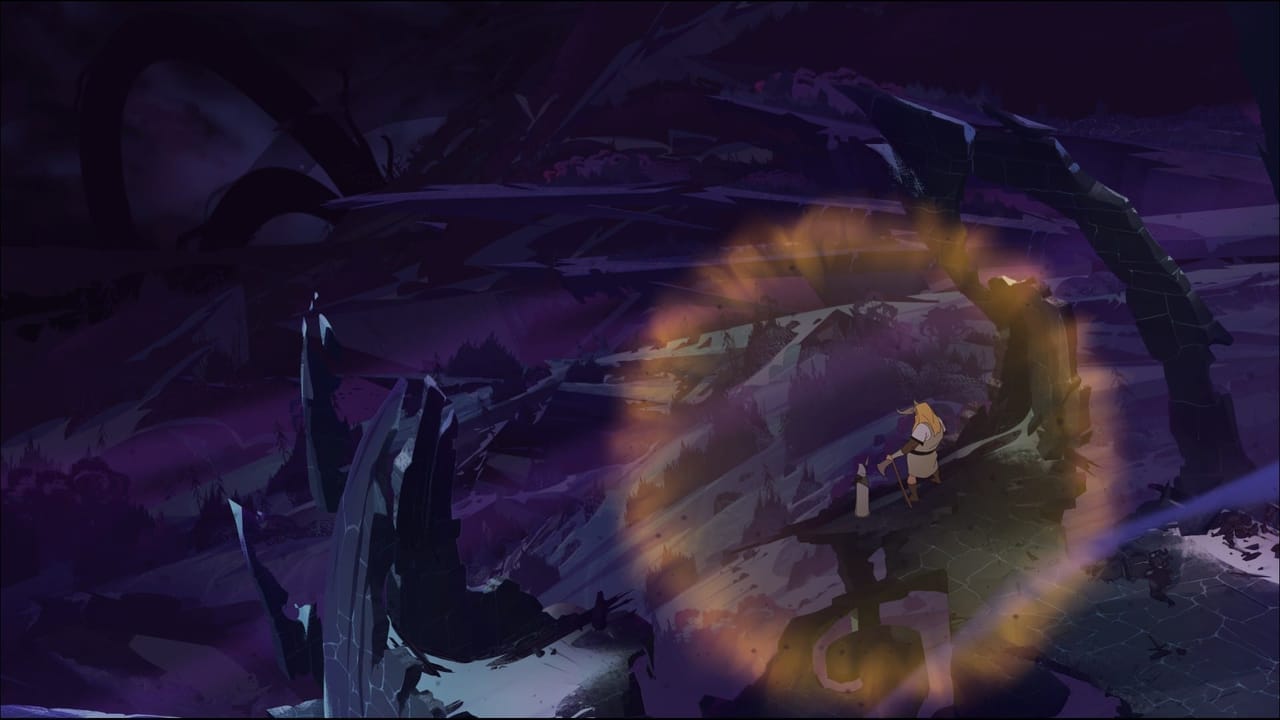
Overall, the quality of the writing builds upon its predecessors, delivering a mostly interesting end to the trilogy. The worldbuilding elements that led to the world's crisis in Banner Saga are great. The revelations behind where the Serpent came from, the dredge and their motivations, the Valka's actions in the past—those are all great. Great too are what we learn about the backstories to many of the key characters and what motivates them.
What happens in the end is entirely your decision, but the choices you can pick are determined by a reason that isn't wholly compelling. I don't want to give anything away, but the reason you have those choices comes down to something seen time and again in many stories. It's a difficult decision to make, not for reasons of the world or plot, but that of a few characters' relationships. Banner Saga has been a story more about the world, the implications of its condition, and the various peoples that inhabit it, not necessarily the character relationships. While those do play a big part, the focus has been more big picture.
Ultimately, why you have those choices does fit some themes with the characters. Rook, Alette, and Iver all struggle with the idea that they as an individual matter and so do their relationships. Time and again throughout the series, and most definitely in Banner Saga 3, the relationships simply between one individual and another have massive implications on the world at large. For example, the factions that have divided Aberrang exist largely because of some key disagreements from just a few people. The individual struggle of selfishness and selflessness weaves its way through every key character and remains a key factor trough the last decision you'll make in the game.
With that said, whatever choice you do make in the end will have massive implications on the future of The Banner Saga. Considering developer Stoic Studio plans to do more in the series' world, I hope it has some implications for future games. We'll have to wait and see.
The Banner Saga 3 Review | Final Thoughts
The Banner Saga 3 is a climactic journey full of epic moments and heartbreak. The awesome epic fantasy, the meaningful decisions, and challenging tactical gameplay all had me engrossed for the game's entirety. It's exactly what you want at the end of a story, providing a grand resolution and enough answers to some mysteries along the way to be satisfying. It is the cap to what I can now say is one of gaming's best trilogies.
Our The Banner Saga 3 review was conducted on PC via Steam with a code provided by the developer. It is also available on Mac, PlayStation 4, Xbox One, and Nintendo Switch.
Review Summary
Pros
- Choices Matter
- Still Visually Stunning
- One of Gaming's Best Epic Fantasies
- Deep, Tactical Gameplay
- Beautiful Score By Austin Wintory
Cons
- Very End Less Epic Than It Could Have Been
Have a tip, or want to point out something we missed? Leave a Comment or e-mail us at tips@techraptor.net
